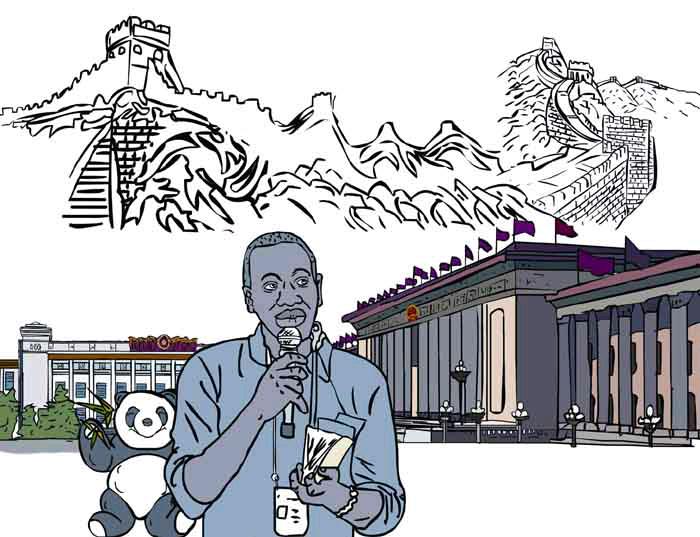New Journey
2017-09-29ByRichardRuhimbana
By+Richard+Ruhimbana
It was fantastic to be selected from more than 80 staff at my media house in Rwanda to participate in the 2017 ChinaAfrica Press Center fellowship program, which is now in its fourth year.
As a fi rst-time visitor to China, the fellowship was a chance to sharpen not just my career as a journalist, but also to settle all my curiosities about China, the culture and its people.
I arrived in Beijing, the first time I had ever flown, on February 20 and immediately felt the warmth and hospitality of the Chinese.
As a fellow of the China-Africa Press Center, I have been lucky enough to visit Jiangsu, Guangdong and Sichuan provinces as well as the Inner Mongolia Autonomous Region. These visits have shown me how uniquely different, diverse, huge and beautiful China is, along with being very different to the stereotypical images I had read about in most Western media.
One thing that surprised me was that tourism is a big employer in China. Before my visit I always thought Chinas jobs only came from manufacturing and agriculture.
The Chinese Government has established tourism sites and museums and promotes culture in counties, cities and provinces, encouraging the locals to know more about their history. China has more than 4,000 museums, according to government statistics from 2016.
The museums are in place to aid the peoples understanding of the intellectual, aesthetic, political and ethical issues arising from the interpretation of the Chinese objects they house.
Together with my fellow journalists from 27 African countries, we visited the National Museum of China in Beijing and the Museum of the War of the Chinese Peoples Resistance Against Japanese Aggression. It was interesting to see the large numbers of old and young people in the museums all paying close attention to the tour guidesexplanations.
In Africa, we have our own history, be it good or bad; but our children should be taught to emulate the Chinese people and leaders for their patriotism and love for their country.
We were also lucky enough to visit Chengdu, capital of Sichuan Province in southwest China—famous for its spicy food and pandas.
Giant pandas, unique to China, are believed to have been in existence here for 8 million years.
At the Chengdu Research Base of Giant Panda Breeding, “pandamonium” is always just minutes away. Tourists reach for their phones and cameras to take pictures every time the animals engage in a playful fi ght or strike a cute pose.endprint
The giant pandas have come to define Chinas conservation efforts. Once threatened with extinction, the animals were taken off the endangered list last year by the International Union for the Conservation of Nature. They remain vulnerable however.
Surveys suggest the population of pandas in the wild has grown to over 1,800. There are also more pandas in zoos around the world now than ever before and yet China continues to give them the best protection possible.
Back in Beijing we visited the Great Wall of China—the worlds longest wall and biggest ancient architecture, with its construction started over 2,300 years ago. The wall covers a distance of 21,196.18 km, with an average height of over 7 meters and width of 9 meters. It has several access points. About 10,000 tourists visit the wall through the Mutianyu section on weekends. Elsewhere on other sections, tens of thousands throng the wall every day.
The governance of a country as big and diverse as China is another intriguing subject. I was lucky enough to cover Chinas political season—the two sessions (the annual sessions of the National Peoples Congress and the National Committee of the Chinese Peoples Political Consultative Conference) in March at the Great Hall of the People in Beijing, where a lot of important issues were discussed.endprint
